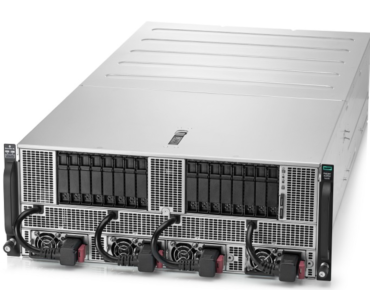In Challenge to Intel, AMD Eyes Server Upgrades

AMD is zeroing in on datacenter overhauls as a means of chipping away at rival Intel Corp.’s x86 dominance of the enterprise IT infrastructure market.
Some market analysts are bullish about the prospects for AMD’s aggressive push into a datacenter market long dominated by Intel, a strategy that hinges on the challenger’s EPYC processor family. One analyst firm quoted by CNBC went so far as to predict AMD’s market share could reach 30 percent of the enterprise chip market.
Others remain skeptical, noting that Intel (NASDAQ: INTC) has withstood earlier AMD (NASDAQ: AMD) challenges while extending its datacenter ecosystem to include co-processors, middleware and networking technologies.
For its part, AMD said this week it sees several datacenter opportunities, including one industry estimate that as many as 6.5 million two-socket servers will require upgrades over the next 12 months. Hence, AMD expects to ride the wave hyperconverged infrastructure built around new hardware that can keep pace with a vibrant IT software sector designed to squeeze more performance from what AMD argues is underutilized hardware capacity.
 The upstart chipmaker outlined its EPYC strategy this week, noting that enterprise datacenters are due for upgrades as big data workloads predominate and cloud services require new security features such as encryption for virtual machines. “A refresh is needed for a true datacenter transformation to occur,” Daniel Bounds, AMD’s senior director of datacenter products, noted in a blog post.
The upstart chipmaker outlined its EPYC strategy this week, noting that enterprise datacenters are due for upgrades as big data workloads predominate and cloud services require new security features such as encryption for virtual machines. “A refresh is needed for a true datacenter transformation to occur,” Daniel Bounds, AMD’s senior director of datacenter products, noted in a blog post.
“Second, speed is everything when it comes to data analytics and, thirdly, you don’t have to sacrifice performance for costs in the cloud,” Bounds added.
AMD’s datacenter strategy is built around its EPYC processor family which the chip maker is positioning as a single-socket platform that can replace existing two-socket servers. The processor family is promoted as providing a mix of computing, memory, I/O performance and security for a range of workloads. AMD also is pairing its CPU processor family with its Radeon GPUs as an inference and deep learning platform.
That combination also gives AMD a leg up on GPU leader Nvidia (NASDAQ: NVDA), which analysts note lacks a strong CPU partner despite its domination of the graphics processor market.
Meanwhile, AMD claims market momentum with 15 system partners, including Dell EMC and Hewlett Packard Enterprise (NYSE: HPE). Together, they and other partners offer more than 50 servers supporting a range of cloud and HPC workloads.
Whether AMD can eat away at Intel’s datacenter market share remains to be seen, analysts said. “The real wild card is the hyperscale market,” said Addison Snell, CEO of Intersect360 Research. “Hyperscale companies like Google, Amazon, and Microsoft buy enough IT in a single year to be market makers on their own. A few wins can go a long win.”
Bullish analysts said potential Intel supply constraints could help boost AMD’s market share. “Technology markets are fickle with suppliers, and that has been especially true with processor vendors,” Snell said.
That’s also true of cloud vendors, where customers are pursuing multi-cloud strategies to avoid vendor lock-in and ensure availability. The enterprise market “has spoken previously and will again, if buyers find an advantage in migrating or diversifying their suppliers,” Snell added.
One possible scenario involves the EPYC processor family becoming what Snell called an “open x86 alternative for those who prefer to mix-and-match.”
If predictions of coming datacenter server overhauls are accurate, upgrades that market tracker IDC estimates could generate $44 billion in global server spending, then AMD's chances of finally grabbing market share from Intel may pan out along with the shift to hyperconverged infrastructure.
--Doug Black, enterpriseai.news managing editor, contributed to this report.
Related
George Leopold has written about science and technology for more than 30 years, focusing on electronics and aerospace technology. He previously served as executive editor of Electronic Engineering Times. Leopold is the author of "Calculated Risk: The Supersonic Life and Times of Gus Grissom" (Purdue University Press, 2016).











